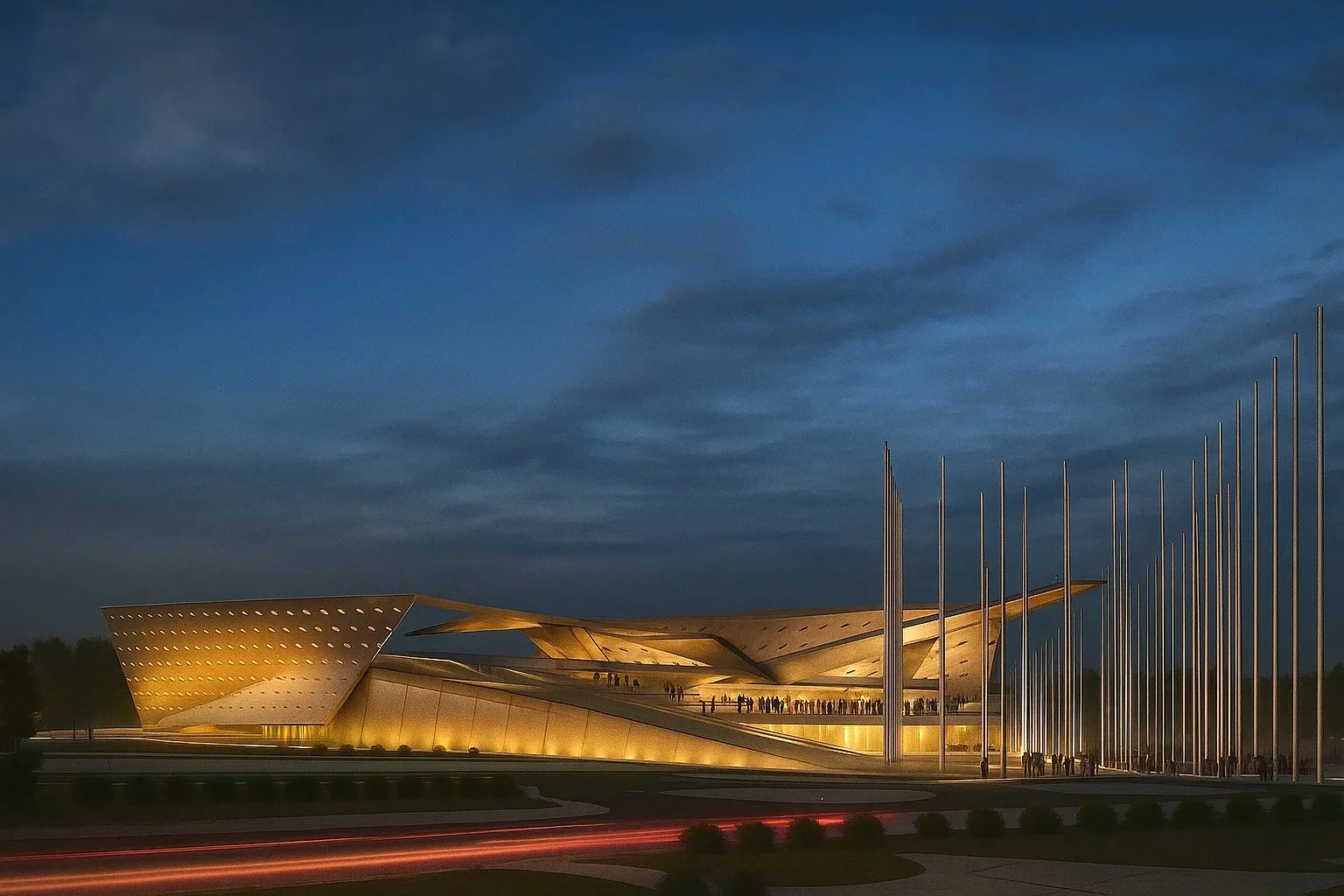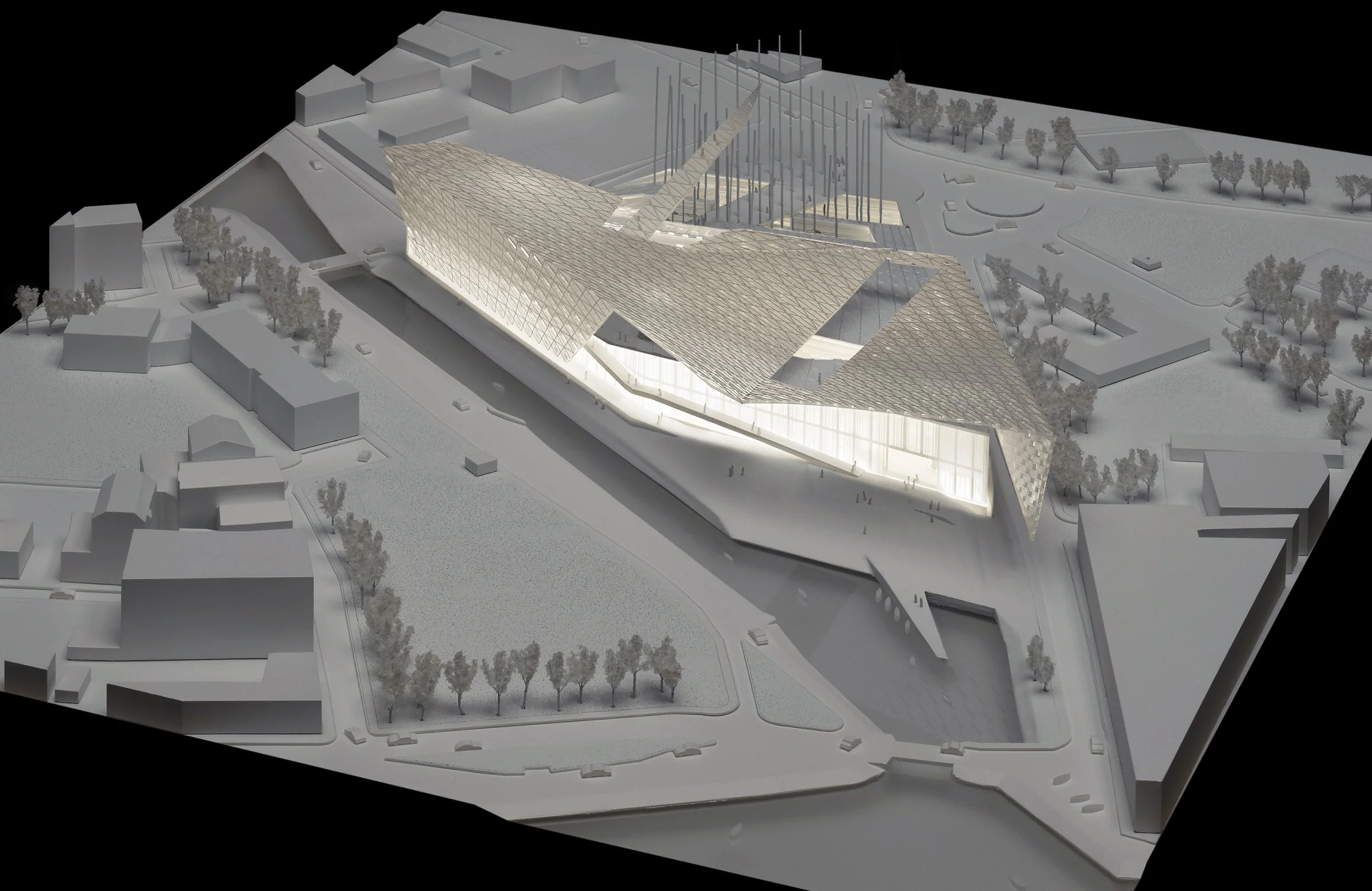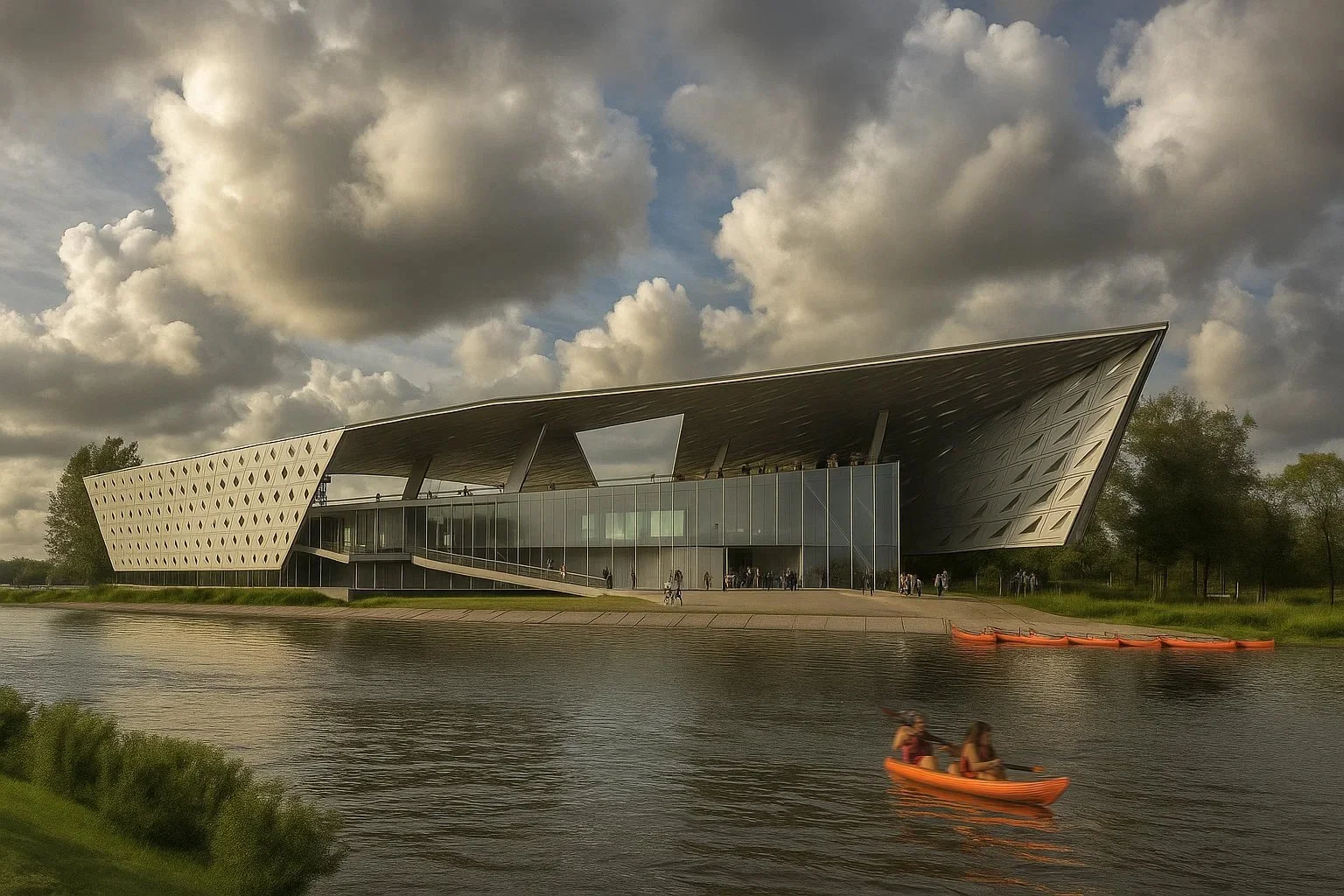
The Museum of the Second World War
The architecture of the Museum of the Second World War evolves as a narrative—an architectural timeline of Polish and European history. It reflects generations of mutual interdependence: the devastation of invasion, the trauma of loss and imprisonment, the extraordinary perseverance of underground survival, the courage to resist, and ultimately, the victory that led to a march toward a renewed future.
The museum is situated in Gdańsk, a city of profound historic significance and symbolic weight. It was here, at Westerplatte, that the first shots of the war were fired, igniting a global cataclysm. Building this museum in Gdańsk is to anchor the memory of that tragedy in place, ensuring that future generations confront the past with honesty and reflection.
Project Size
80,000 sf
Location
Gdansk, Poland
Architecture as History Embodied
The visitor’s path through the museum is conceived as a physical and emotional journey. One first crosses the Voids of Loss, marked by stark, naked flagpoles—silent witnesses to the courage and sacrifice of a fallen army. From there, the path descends below grade into the Hall of Resistance, an entry space that symbolizes the underground struggle of Poland and Europe during the war years.
The circulation is intentionally indirect, pulling visitors into the story of survival, defiance, and sacrifice. Interactive exhibits, paired with architectural voids, immerse visitors in both the historical events and the emotions they evoked. The museum thus becomes more than a container of artifacts; it becomes an active participant in the telling of history.
Ascent Toward Renewal
From the depths of loss and resistance, the architecture and visitor rise together. Ascending through the exhibits, the visitor follows a symbolic trajectory from destruction to rebuilding, mirroring Poland’s emergence from a decimated Europe.
This ascent culminates in the upper sloping terrace, a procession that begins with the story of loss and steadily rises to embody renewal and the democratic rebirth of Poland. Above, a Framing of Hope—fragmentary and unfinished—hovers as an emblem of ongoing rebuilding and aspiration. It symbolizes not only Poland’s resilience but also the collective project of a Europe striving for peace and unity.
Platform of Strength
At the height of the journey, the Viewing Platform of Strength aligns directly with Westerplatte. This deliberate axis binds past and present: the landscape of remembrance is framed alongside the view of Poland today, a sovereign nation in a united Europe.
It is a reminder that while recovery has been remarkable, the memory of the war’s origins must never be forgotten. The museum closes the circle of history: from tragedy to renewal, from devastation to strength. Once again, a proud and independent Poland emerges—ready to take its rightful place within the European community, determined to ensure that the events of the past never repeat..








